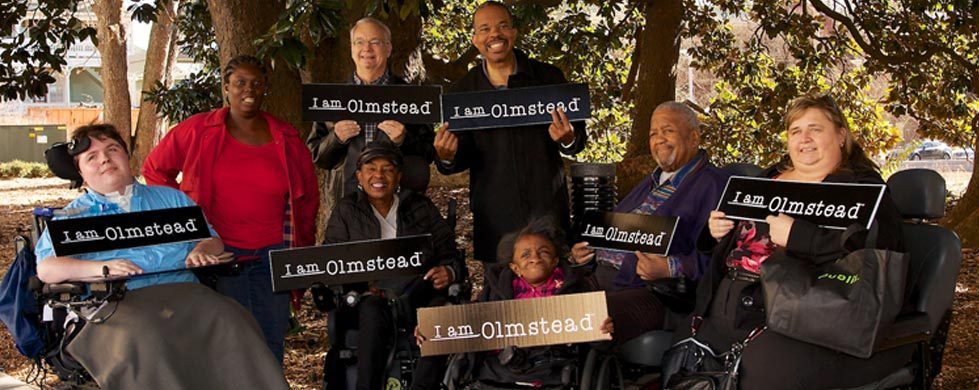
The People Behind the Lawsuit
The Olmstead lawsuit started with two women from Georgia named Lois Curtis and Elaine Wilson who both had diagnoses of mental health conditions and intellectual disabilities. Lois and Elaine found themselves going in and out of the state’s mental health hospitals dozens of times. After each stay in the hospital, they would go back home; but then, because they did not have help at home, they would start to struggle again and would have to go back to the hospital to get help again. Lois and Elaine asked the state of Georgia to help them get treatment in the community so that they would not have to go live at the state mental hospital off and on. The doctors who treated Lois and Elaine agreed that they were capable of living in the community with appropriate supports. However, Lois and Elaine ended up waiting for years for their community-based supports to be set up.
Atlanta Legal Aid Takes the Case
Sue Jamieson, who was an attorney at the Atlanta Legal Aid Society, filed a lawsuit in 1995 on behalf of Lois (and then later added Elaine) for supports to be provided in the community. The lawsuit, which is known as the Olmstead decision, ended up going to the highest court in the country, the United States Supreme Court.
The Decision
The Supreme Court agreed with Lois and Elaine. Justice Ruth Bader Ginsburg announced the decision of the court on June 22, 1999, and the Court found that under the Americans with Disabilities Act (the ADA), it is against the law for the state to discriminate against a person based on his or her disability. The Court said that the state discriminated against Lois and Elaine by requiring them to live in a mental health hospital. It should have instead provided services for them in the community. The Court said that people with disabilities like Lois and Elaine have the right to receive the treatment they needed in an integrated setting if that is what they want, if their doctors agree, and if it doesn’t fundamentally change how the state provides services to people with disabilities.

